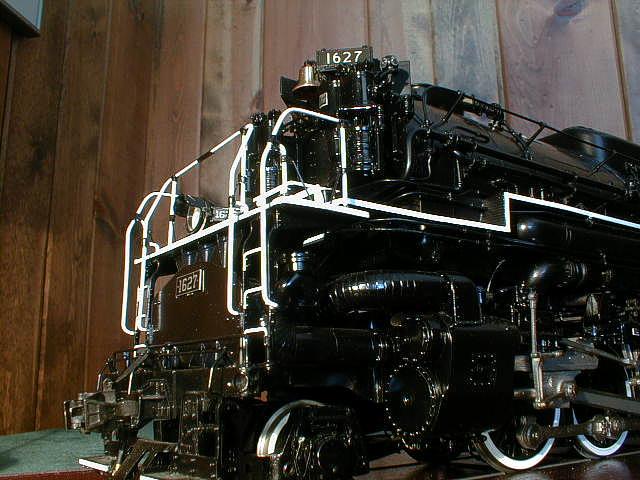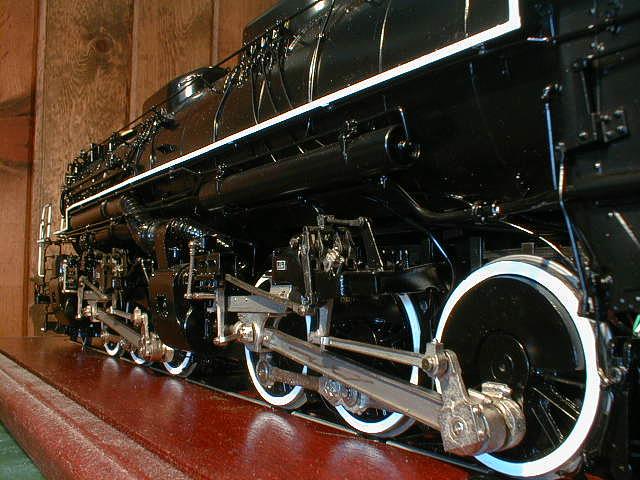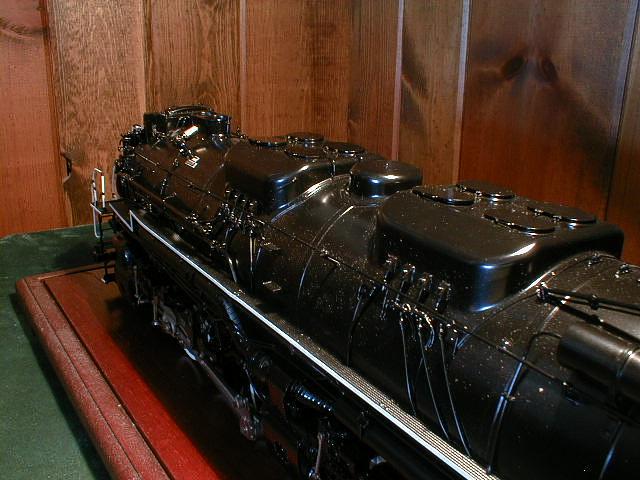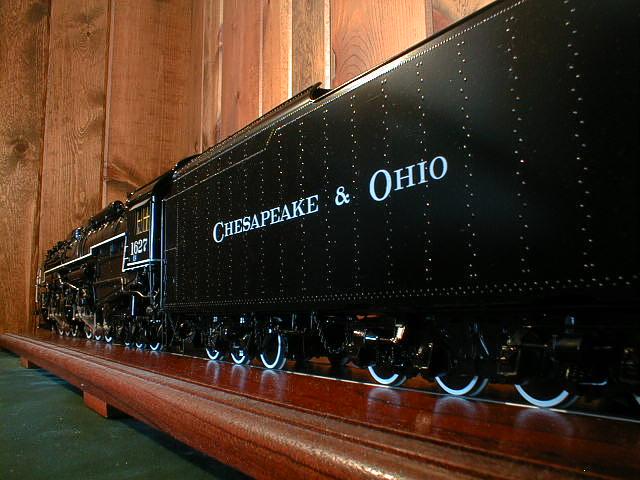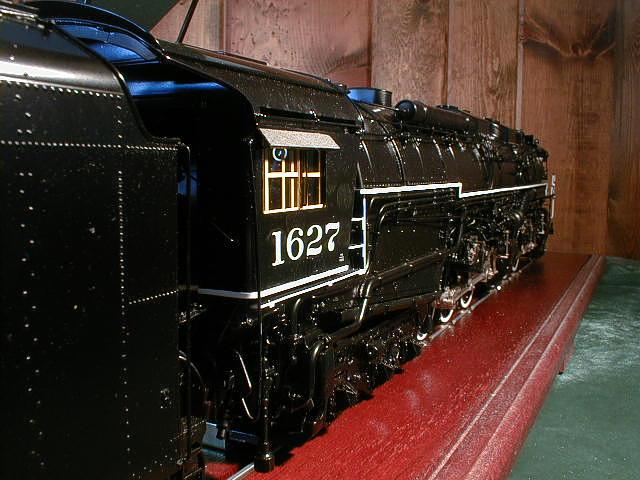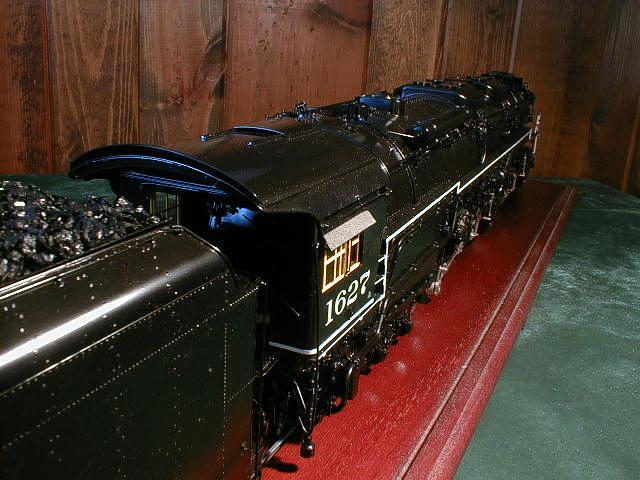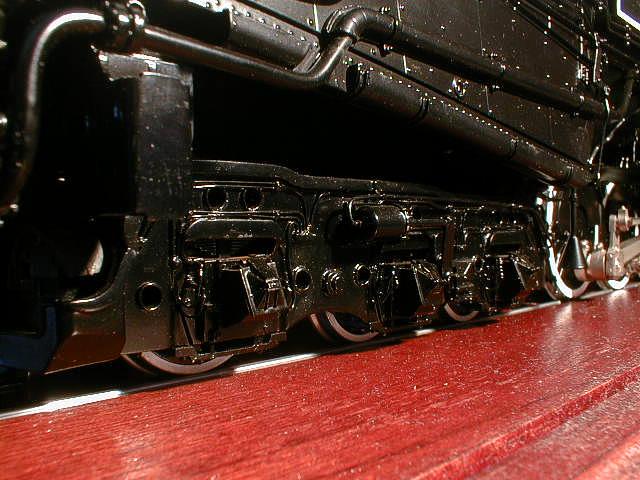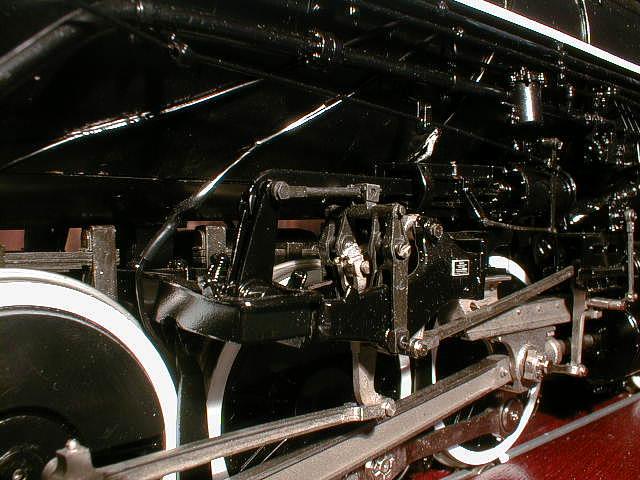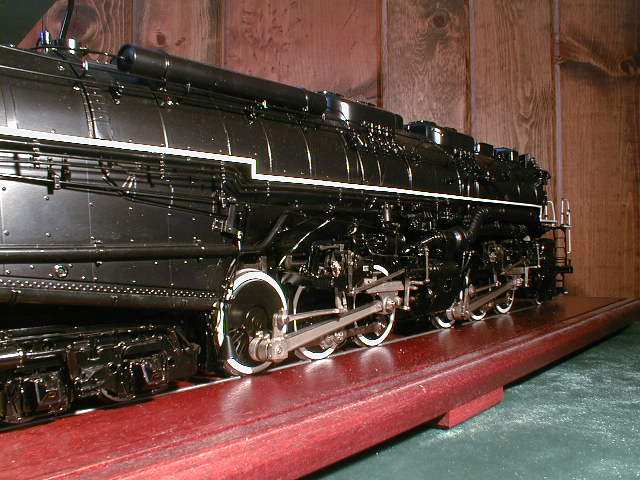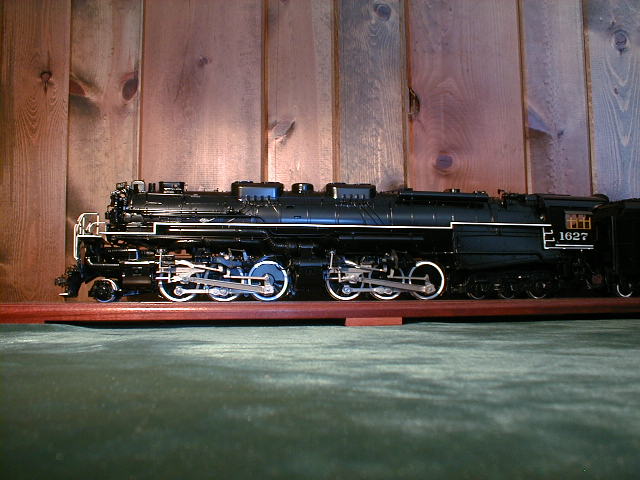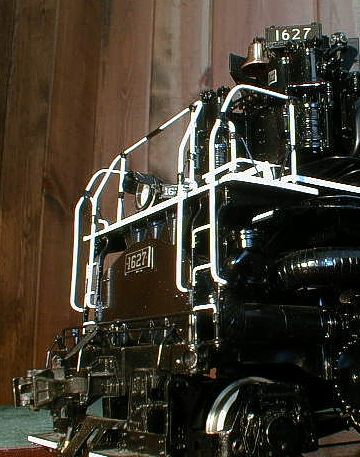Allegheny
Chesapeake & Ohio H-8 Allegheny 2-6-6-6, 1941-42 Version
- Scale: 1:32
- Release: 1996
- Limited Edition: 40
- Model Size: 47”L x 5”W x 7”H
- Base Type: Mahogany Roller
- Base/Case Size: 52”L x 9”Wx 10”H
- Availability: Sold out
Chesapeake & Ohio H-8 Allegheny 2-6-6-6, 1944 Version
- Scale: 1:32
- Release: 1996
- Limited Edition: 50
- Model Size: 47”L x 5”W x 7”H
- Base Type: Mahogany Roller
- Base/Case Size: 52”L x 9”Wx 10”H
- Availability: Sold out
Chesapeake & Ohio H-8 Allegheny 2-6-6-6, 1948 Version
- Scale: 1:32
- Release: 1996
- Limited Edition: 30
- Model Size: 47”L x 5”W x 7”H
- Base Type: Mahogany Roller
- Base/Case Size: 52”L x 9”Wx 10”H
- Availability: Sold out
Chesapeake & Ohio H-8 Allegheny 2-6-6-6, Virginian AG
- Scale: 1:32
- Release: 1996
- Limited Edition: 40
- Model Size: 47”L x 5”W x 7”H
- Base Type: Mahogany Roller
- Base/Case Size: 52”L x 9”Wx 10”H
- Availability: Sold out
Chesapeake & Ohio H-8 Allegheny 2-6-6-6
“The most perfectly engineered articulated ever built.” “The pinnacle of the builder’s art.” “There was no higher development in steam.” These are claims made for Chesapeake & Ohio’s.
Until the early 1920s, locomotives had depended on size more than engineering to produce power. In 1925, with power-at-speed as its objective, Lima Locomotive Works introduced the 2-8-4, a locomotive with an enlarged firebox that needed two trailing-truck axles for support. The C&O was so impressed with Lima’s Super Power concept that it ordered forty (40) 2-10-4s and then, in 1941, ten (10) 2-6-6-6s. This was the Allegheny with a firebox so big that it needed three axles for support. From 1941 through 1948, C&O received a total of sixty class H-8 Alleghenies in five production orders. It put them to work hauling 11,500-ton coal trains up the 57 percent ruling grade of the 80-mile Allegheny Subdivision between Hinton, West Virginia and Clifton Forge, Virginia. The Alleghenies were adaptable, easily capable of hauling heavy wartime troop trains over the mountains at passenger train speeds, and later, of hauling even heavier coal trains across the Ohio flatlands. Neighboring Virginian purchased eight more as its class AG, and used them to haul long coal trains to tidewater.
When Lima completed Allegheny No. 1600 in November 1941, it calculated the weight in working order to be 775,330 lbs. but reported it to be only 724,500 lbs. (the C&O had a 726,000 lb. weight limit). Then in 1945, when the Virginian asked the C&O to deliver its new AGs at 753,000 lbs. and the C&O initially declined because they were too heavy, an embarrassed Lima rolled Nos. 1600 and 1630 back on the scale and this time reported 770,910 lbs. and 771,670 lbs. respectively. Thus, it appears that the 45 war-time Alleghenies weighed about the same as the Union Pacific’s five (5) Big Boys of 1944, long recognized as the world’s heaviest locomotives, at 772,250 lbs.
The Alleghenies were distinctive in many other ways. They had, by far, the highest axle loading (over 86,000 lbs.) and generated the most power of any steam locomotive ever built (No. 1608 once recorded 7,498 drawbar horsepower pulling a 160-car train weighing 14,075 tons). Yet despite their huge boiler diameter (109 inches) and height (16’7″ at the stack for the post-war locomotives), they were so well proportioned and compact that they appear smaller in photographs than they actually were, as a side-by-side comparison of models with our Big Boys will show. The Virginian AGs were nearly identical to the H-8s (Lima used almost all the same patterns and tooling for both). The most visible differences were the AGs’ higher tender decks and smaller sandboxes.
The Alleghenies’ end came slowly. Storage of H-8s began in 1952 when some were only four (4) years old, and scrapping started in 1954. But twelve (12) H-8s, No. 1600 among them, were put back in service beginning in July 1955, when coal export shipments increased so rapidly that the C&O was caught short of motive power. Exactly a year later, on July 27, 1956, the last fires were permanently dropped on 1647 and 1653. Only two (2), Nos. 1601 in Dearborn, Michigan and 1604 in Baltimore, were preserved. On the Virginian, all eight (8) AGs were stored in serviceable condition for possible emergency service from 1954 to January 1960, when all of them were scrapped.
Just as the Allegheny was one of the most impressive steam locomotives ever built, we at Fine Art Models made it our objective to produce the most impressive locomotive model ever built.
More than two years of research and design went into this model. No. 1601, at the Henry Ford Museum, is only 20 minutes from us, and there is nothing like having the real thing in your own backyard when you are trying to build a model. We produced 150 units of the H-8 two of each road number as well as 30 of the AG, including all eight road numbers.
The Allegheny has our patented sound system with four chuffs per stroke for each set of cylinders (since this was an articulated locomotive). There is the brake release sound, random boiler safety release sound while standing, and compressors that turn off and on automatically whether moving or standing. There are two large speakers in the boiler and the sound is properly synchronized with the valve action of the cylinders.
The Allegheny comes with a beautiful custom-made hardwood display base, which also serves as a roller base so the locomotive can be run in place. And, of course, there is a Plexiglass dust cover for the base, a transformer for lighting, and full-size line drawing.
Reference
Dixon, Thomas W, and Huddleston, Eugene L., The Allegheny—Lima’s Finest; Edmonds, Washington, Hundman Publishing Inc., 1984 — contains all information on the Allegheny available from railroad sources at the time of its writing
Huddleston, Eugene L. Doctoning the Scales: The Case of the Overweight Alleghenies; Trains Magazine, December 1998 — new information from an author of The Allegheny—Lima’s Finest
Shuster, Philip,, Huddleston, Eugene L, and Staufer, Alvin F., C&O Power—steam and diesel locomotives of the C&O, 1900–1965; Medina, Ohio, Alvin Staufer, 1965
Weitzman, David, Superpower, the making of a steam locomotive; Boston, David R. Godine, Publisher, Inc., 1987
